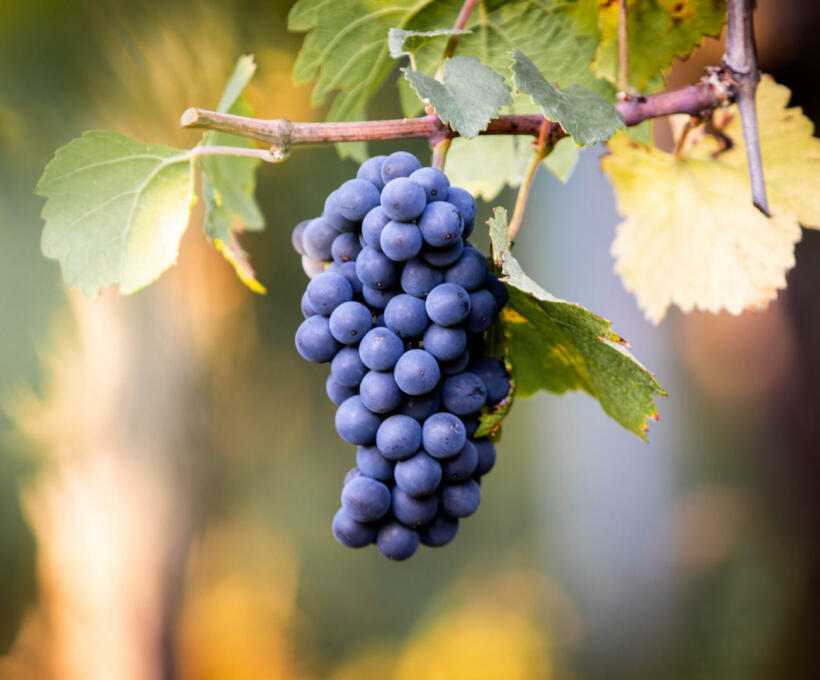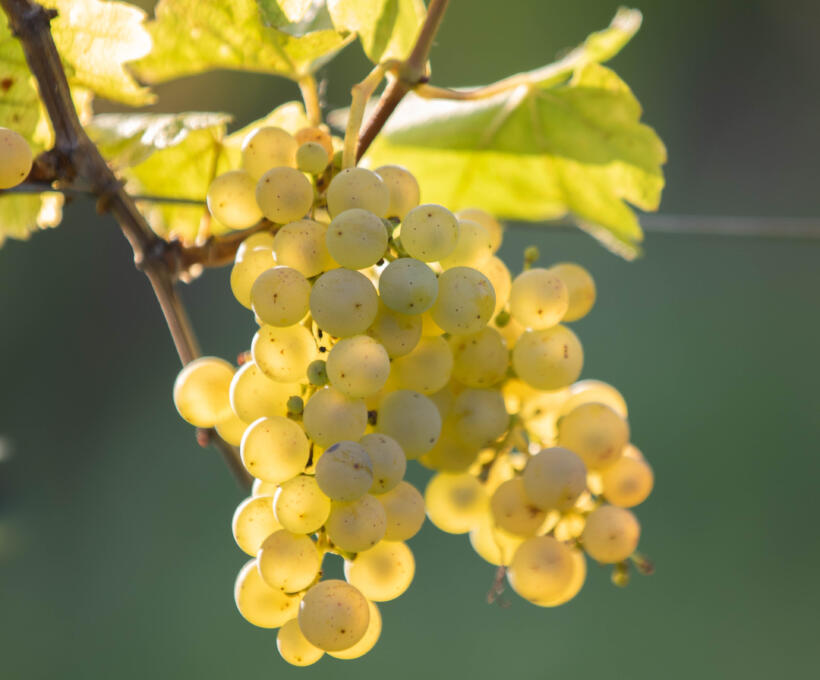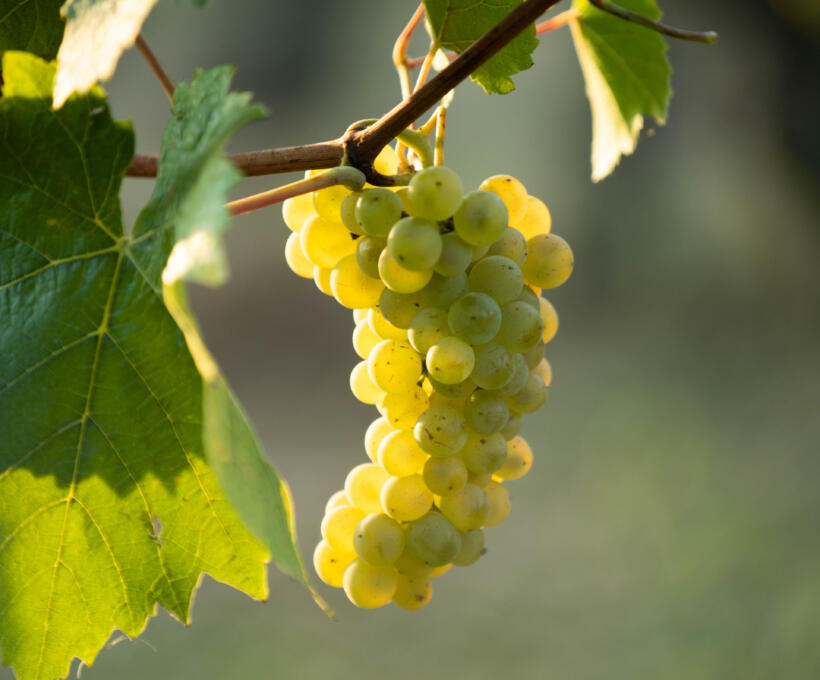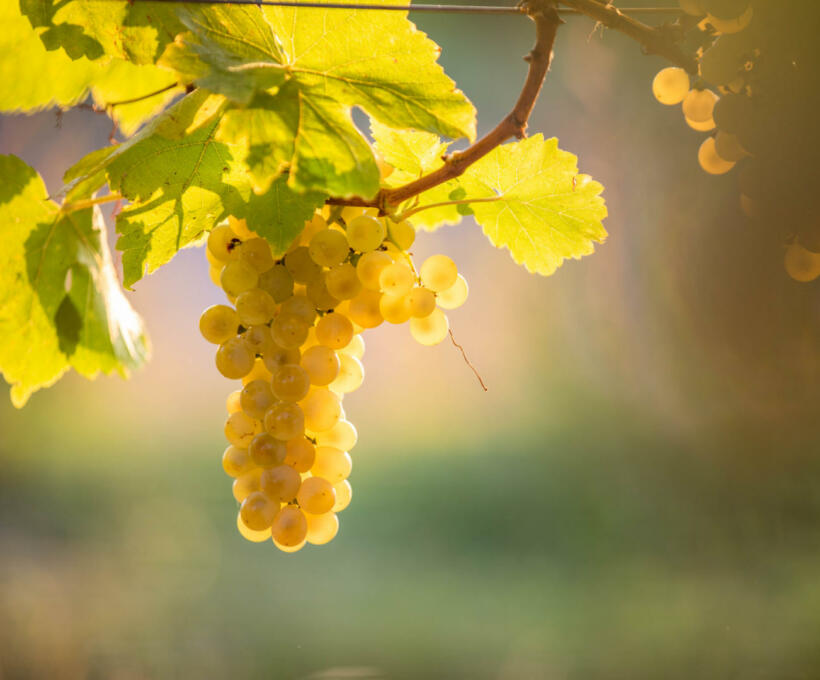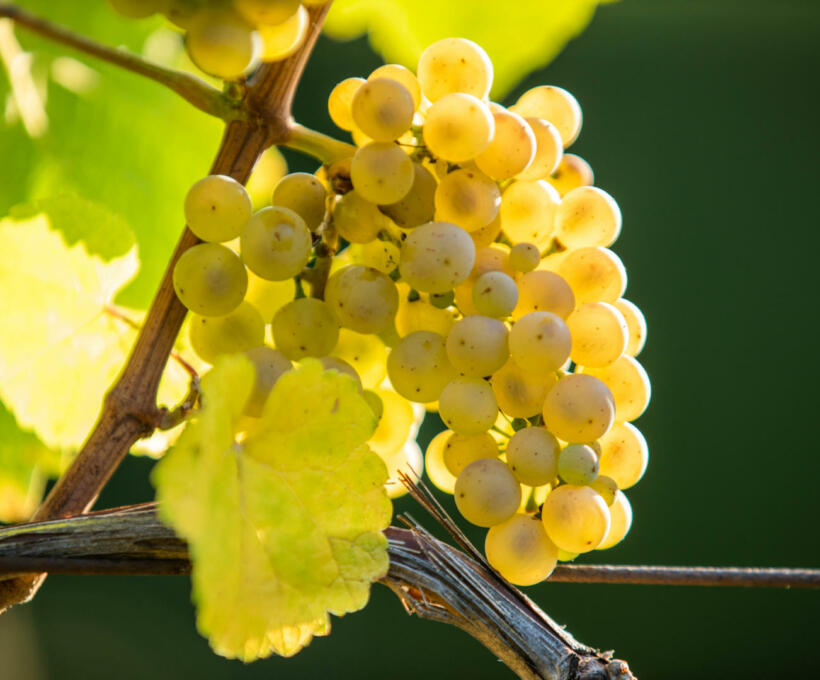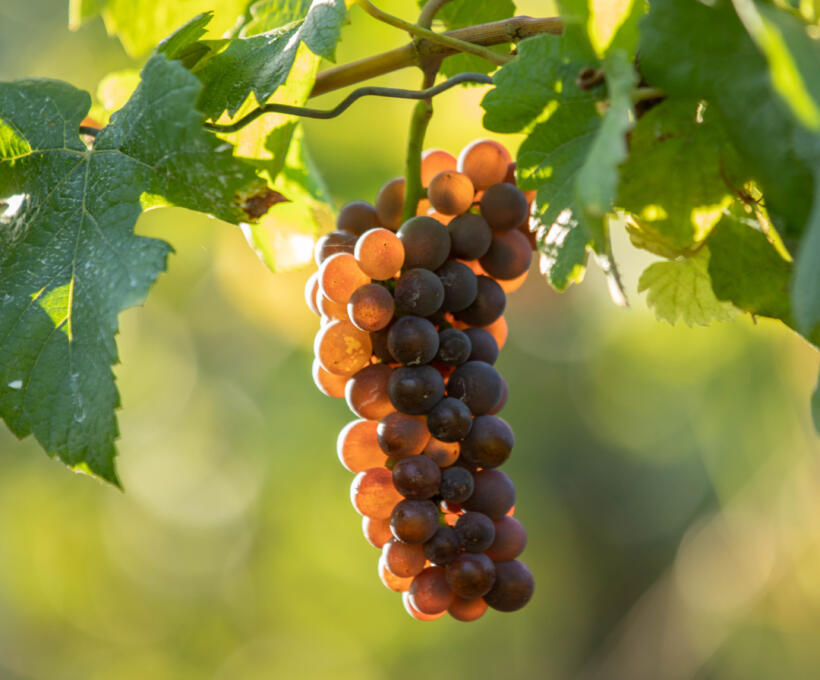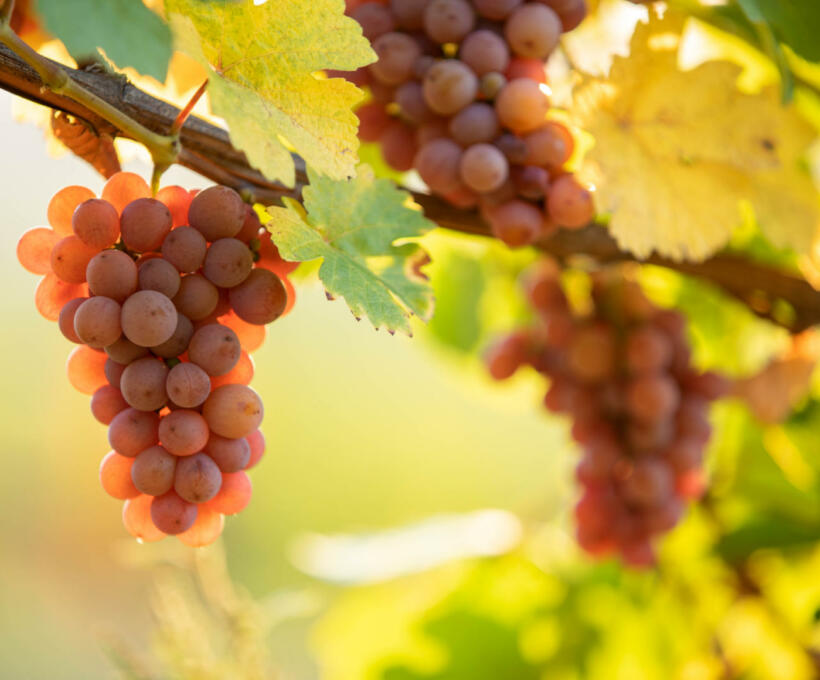The Sylvaner
The Sylvaner, with its light green grapes, produces a white wine that is dry, fresh, fruity, sometimes with a slightly sparkling characteristic, very easy to drink. It may present a slight acidic and stiff taste in the North, rounder and more fruity in the South.
It is the perfect wine for seafood platter, cold meats, pâté en croûte (paté in a crust), starters, fish, or wine of thirst. Left aside from the qualitative perspective after the war, still too often branded with a bad image, it is however a wine with an excellent quality price ratio.
The Pinot Blanc
The Pinot Blanc, darker green with yellow reflections, a grape variety that remained little known outside Alsace for a long time, and is becoming increasingly popular thanks to its great conviviality. Marked with a great suppleness, it produces a white wine that is dry, very well balanced, supple but which also remains sharp and peppy.
Two grape varieties close to Pinot Blanc can be distinguished: The Pinot d’Alsace, known as Pinot Vrai (True Pinot), with a better natural acidity, which mainly gives the wine its fruitiness and smoothness, and the Pinot Auxerrois (Pinot from Auxerre), more alcoholic and with a higher concentration of natural sugar, which provides the strength. It is of a more golden yellow, is a little softer and sometimes presents a slight bitterness. At the Domaines Schlumberger, they are combined according to a 80/20 % ratio, for a better balance of the wine. Their maturity is equivalent, sometimes more precocious for the Auxerrois. A wine comfortable in any situation where using a white wine is essential, it adapts to the most simple dishes as well as the most sophisticated. Also has a very good quality price ratio.
The Muscat
The Muscat, pale yellow with slightly golden reflections, produces a dry wine, with a very marked fruitiness, giving the impression of biting into the grape. Very different from the sweet muscats. Really different from sweet muscat, Muscat Ottonel, which provides the smoothness, the fruitiness and the crunch of fresh grapes.
A delicate grape variety, very sensitive to run-out, cannot sustain mediocrity, and is not necessarily successful anywhere, nor all the time (often called “the wine grower’s dancer”), the wine for pleasure. Wonderful wine for the aperitif, excellent for selling by the glass, it is also a very good companion for asparagus.
The Riesling
The Riesling, green with pale yellow reflections, is the most well-known together with Gewurztraminer, considered as the “king” grape variety of Alsace. It produces white wine that is dry , proud and virile, distinguished, with a delicate fruitiness and a very smooth bouquet. It reaches the peak of its potential in the terroirs of Grands Crus, where it expresses its uniqueness with wonder. It is unrivalled with fish and shellfish, some white meats, and can be used for daily preparations as well as very refined dishes.
The Pinot Gris
The Pinot Gris, darker grape, of a faded pink, is characterised by its great suppleness much like the Pinot Blanc. Clearly richer and sophisticated, it is headier, opulent and vigorous, with a discrete fruitiness, has a very good ageing potential.
No one knows if it was imported from Hungary or not, but it has nothing to do with the Tokays from Hungary. The name Tokay is no longer authorised in France, but the hyphenated name: Tokay-Pinot Gris remains tolerated until 2007. It is also a wine for which demand is constantly growing. It is extremely versatile; its flavours of soil, undergrowth, smoky, fatty, make it the perfect companion for terrines, mushrooms, cream, white meats, puff pastry, game, fish in sauce and many other combinations. (Foie Gras of course).
The Gewurztraminer
The Gewurztraminer, grey grape, with a thicker skin, is the unrivalled grape variety in Alsace. Contrary to the others, which are found throughout the world, with some great success stories, it is really only in our region that it produces wines of such great finesse, with such perfect balances between the fruits, the smoothness and the strength.
In the past, Traminer was distinguished from Gewurztraminer. It was only after the wine making process, as a finished wine, that one separated on the one hand the Gewurztraminer, the more aromatic and spicy wines, and on the other the Traminer, less characteristic and less typical of the appellation. This double appellation was still tolerated between 1970 and 1980, only to be brought under the single appellation Gewurztraminer towards 1978/1979 (500 aromatic constituents whereas a perfume only contains one hundred or so).
It produces wines that are vigorous, full bodied, very aromatic, with a strong bouquet and very elegant. Just like Muscat, it does not sustain half-measures, the “pasty” side. Its greatest success stories are found in the Upper Rhine region, primarily for climatic reasons, and Guebwiller has always had the reputation for its capital and prime location. Well vinified, for very good vintages, it can present an almost infinite ageing potential.
It is less difficult to drink than one may think: aperitif, dessert wine by excellence, it is the perfect companion for exotic cuisine, Chinese mostly, or meat dishes with fruits (also with a dish of shellfish, such as lobster flambé).
The Pinot Noir
Pinot Noir, with its dark blue grapes, is Alsace’s only ‘red’ wine. Deliciously fruity, it is much appreciated for its charm and originality. In red, with a longer maceration, it is more powerful and full-bodied, with aromas of raspberry, perfect with game and red meat.

